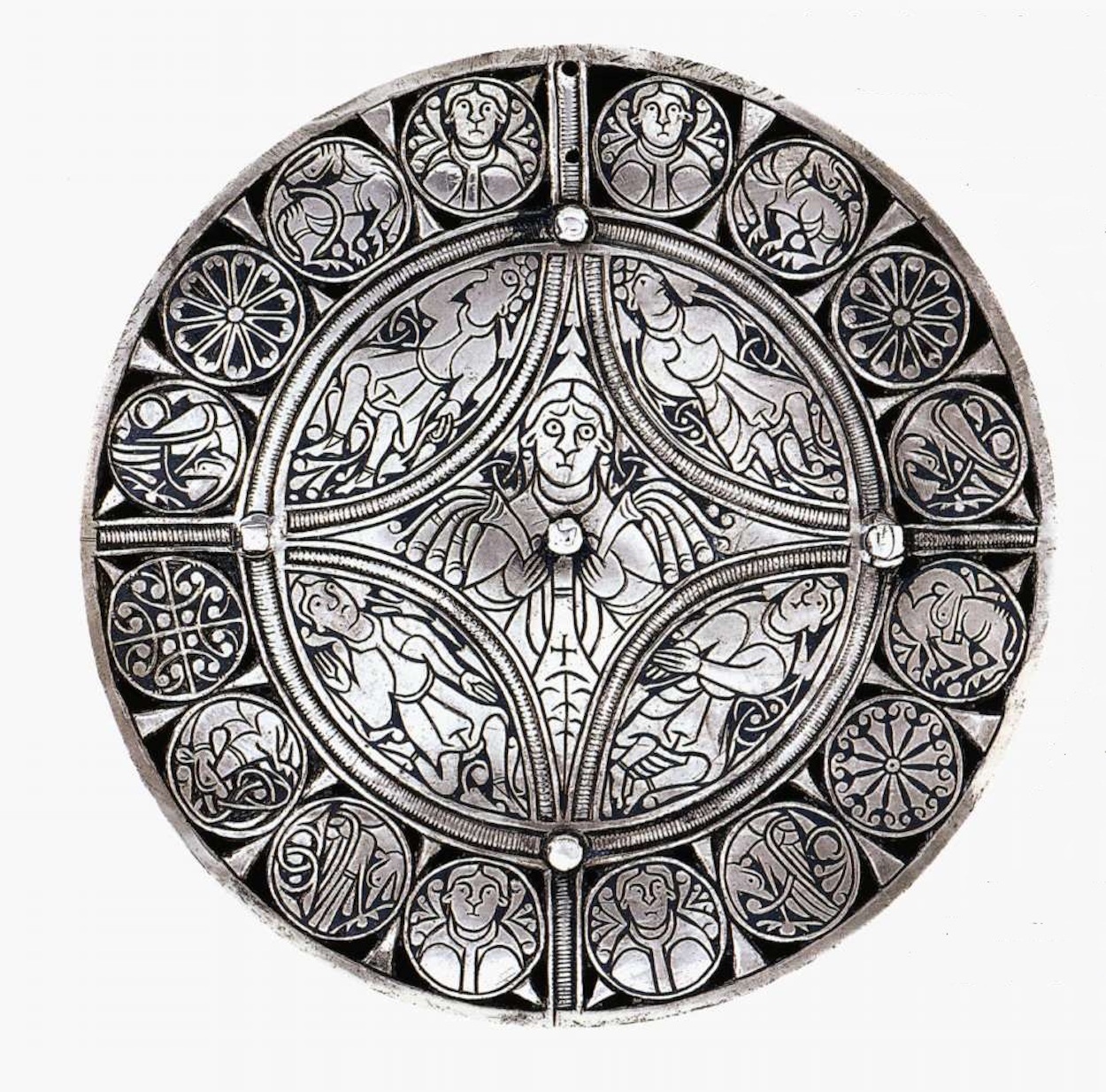The Anglo-Saxons were well-known for their remarkable metalwork, and in particular for their immaculate silver, gold, and garnet jewelry. This piece, known as the Fuller Brooch, was named after its part-donor; in many ways it is representative of its genre. In this case, however, there is more—much more—than meets the eye. Unlike many Anglo-Saxon brooches, this piece includes several detailed portraits of individuals. Those positioned in and around the center personify the five senses, a subject completely absent from any other piece of art produced in and by this culture. At the center is sight, staring out almost menacingly at the viewer. The remaining four senses are depicted in quadrants surrounding this centerpiece, including taste (top-left), with his hand conspicuously in his mouth; smell (top-right), with a decidedly prominent nose; hearing (bottom-left), his hand up to his ear and face attentive; and touch (bottom-right), his hands clasped at his side. The images that make up the outer perimeter depict mostly natural scenes, although there are several human subjects.
Anglo-Saxon brooches were made, quite literally, to be seen; they would have been prominently worn, and while they certainly did indicate the enhanced status of the owner, they also tell us a great deal about the culture responsible for their creation. Although the Christianization of England had proceeded apace since the 6th century, the images on this brooch may indicate the persistence of some pagan beliefs, for example. And brooches like this one could be intensely personalized, providing us, today, with a window into not only a lost world, but also the preferences and tastes of an individual person otherwise lost to history.
Stephane Skenyon
P.S. You can read a story about another remarkable medieval metalwork - the Thomas Becket Reliquary here.


 Unknown Artist
Unknown Artist